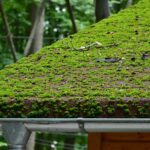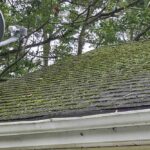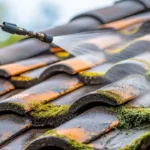When it comes to maintaining your home, the roof is often overlooked. However, understanding and implementing the best practices for seasonal roof care is crucial for protecting your home from potential damage caused by weather changes. Whether it’s snow, rain, or the hot sun, each season presents its own challenges for roof maintenance.
The goal of this guide is to help homeowners like you navigate through effective seasonal care strategies, ensuring that your roof remains in the best shape all year round. Implementing these practices can save you money, time, and the stress that comes with unexpected roof repairs.

Why Seasonal Roof Care is Important
Seasonal roof care is important because each season affects your roof differently. Weather elements can rapidly wear down roofing materials, causing leaks and structural damage. By adopting the best practices for seasonal roof care, you’re proactively ensuring that your roof withstands all seasonal changes and ultimately extends its lifespan.
External Elements Impacting Your Roof
Your roof battles various elements throughout the yearrain in the fall, snow in the winter, wind in the spring, and sun in the summer. Each element contributes to the wear and tear of your roof. By understanding what each brings, homeowners can better prepare and protect their homes.
Spring Roof Maintenance Tips
The transition from winter to spring is an ideal time to survey and repair any damages caused by heavy snow and ice. Start by removing debris and examining shingles for any wear and tear.
Inspect for Winter Damage
Begin by checking the roof for cracked or missing shingles. Ice dams formed during the winter may have contributed to water damage which should be addressed promptly to prevent further issues.
Clear Gutters and Downspouts
Ensure both are free from leaves and other debris so water does not pool, leading to roof leaks. For a detailed guide on this, many homeowners find the step-by-step roof maintenance guide helpful.
Summer Roof Maintenance Tips
While summer brings sunshine, it also introduces heat-related stress to your roof. Over time, UV rays can degrade roofing materials, leading to premature aging.
Examine for Heat Damage
Late summer or early fall is an excellent time to inspect the roof for any heat damage, such as blisters or deep cracks in the materials. By catching these early, you can prevent larger issues.
Trim Overhanging Branches
Ensure that no tree limbs rest on or against your roof, as they can scrape and damage shingles in windy conditions. Regularly trimming branches can prevent this damage and the subsequent costly repairs.
Fall Roof Maintenance Tips
Fall is a critical time for preparing your roof for the harsh conditions winter brings. This involves cleaning and a thorough inspection of the roof.
Remove Fallen Leaves
Leaves can trap moisture leading to mold growth and rot. Regularly remove them from your roof and gutters.
Check for Loose Shingles
Loose or missing shingles invite further winter problems. Ensure they are secure and in place before the first snow falls. For a more comprehensive inspection checklist, you can refer to the DIY roof inspection checklist.
Winter Roof Maintenance Tips
Winter poses significant challenges due to inclement weather. Being proactive can prevent buildup and future problems.
Keep the Roof Clear of Snow
Heavy snow can cause gutters to break or roofs to sag. Promptly clearing snow reduces stress on the structure, preventing long-term damage.
Monitor for Ice Dams
Ice dams can cause leaks if not addressed early. Installing proper insulation and ensuring attic ventilation helps prevent them. For further advice, consider checking out NRCA’s roof maintenance page.
Conclusion
By understanding and implementing these best practices for seasonal roof care, homeowners can ensure their roof remains healthy and functional. Regular maintenance can save you from costly repairs and keep your home safe from the elements.

Frequently Asked Questions
1. How often should I inspect my roof?
It’s best to inspect your roof every season. Look for signs of damage, debris, and ensure gutters are clear.
2. What common roof issues arise during the winter?
Ice dams and excessive snow buildup are common issues that can cause leaks and roof sagging.
3. When is the best time for roof repairs?
Spring and fall are ideal. It’s best to address issues before the extreme temperatures and weather conditions of summer and winter hit.
This article contains affiliate links. We may earn a commission at no extra cost to you.








